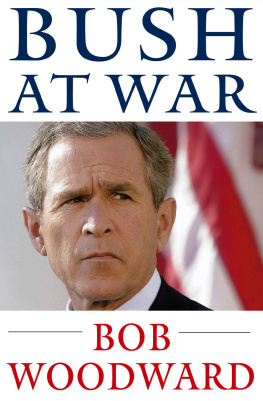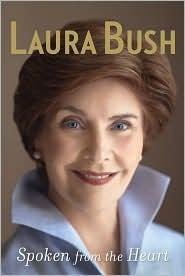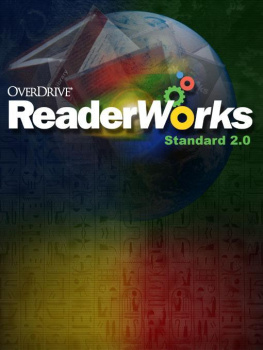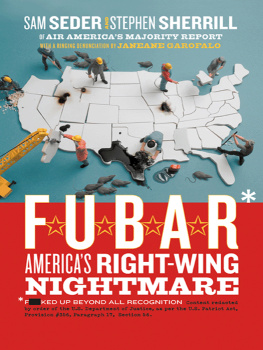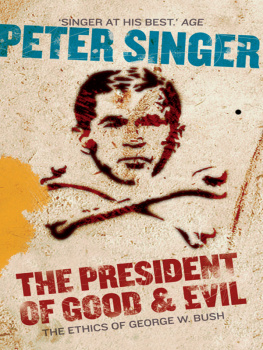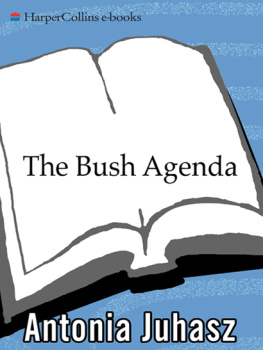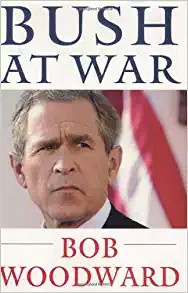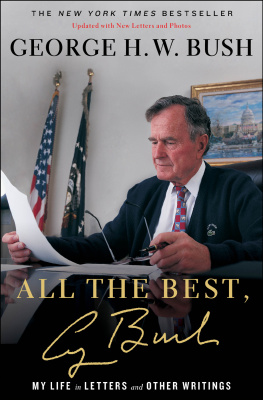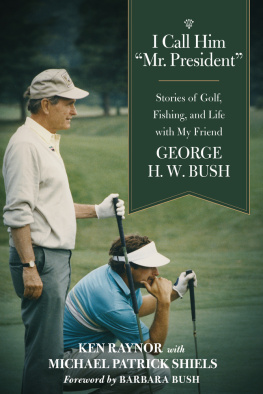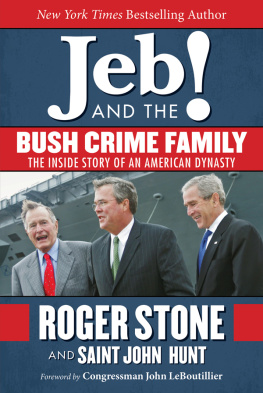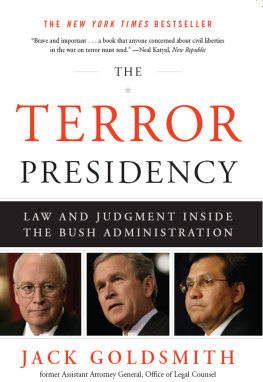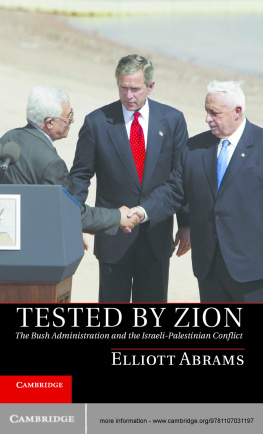Praise for B USH AT W AR
Provides a rare chance to understand the leadership style of the man who now sits in the Oval Office.
D AVID I GNATIUS , T HE W ASHINGTON P OST
Bob Woodward has a virtual franchise on inside accounts of administrations. Bush at War is an invaluable look at how Bush and his top aides are thinking and acting now as they decide whether to invade Iraq.
F RANK D AVIES , T HE M IAMI H ERALD
Bush at War is great reading about the greatest issue of the day.... [A] treasure trove of priceless detail that brings the story alive.
J OHN E. M ULLIGAN , P ROVIDENCE J OURNAL -B ULLETIN
Smooth, focused and as comprehensive as it ever gets with first drafts.
B ILL B ELL , N EW Y ORK D AILY N EWS
Provides readers with a wealth of fly-on-the-wall detail from deliberations within the Cabinet.... Illuminating.
S TAN C ROCK , B USINESS W EEK
Extraordinarily gripping... probably the most important book that Woodward has written... not merely the first draft of history but something close to its most significant source.
T IM H AMES , T HE T IMES (L ONDON )
Thank you for purchasing this Simon & Schuster eBook.
Join our mailing list and get updates on new releases, deals, bonus content and other great books from Simon & Schuster.
C LICK H ERE T O S IGN U P
or visit us online to sign up at
eBookNews.SimonandSchuster.com
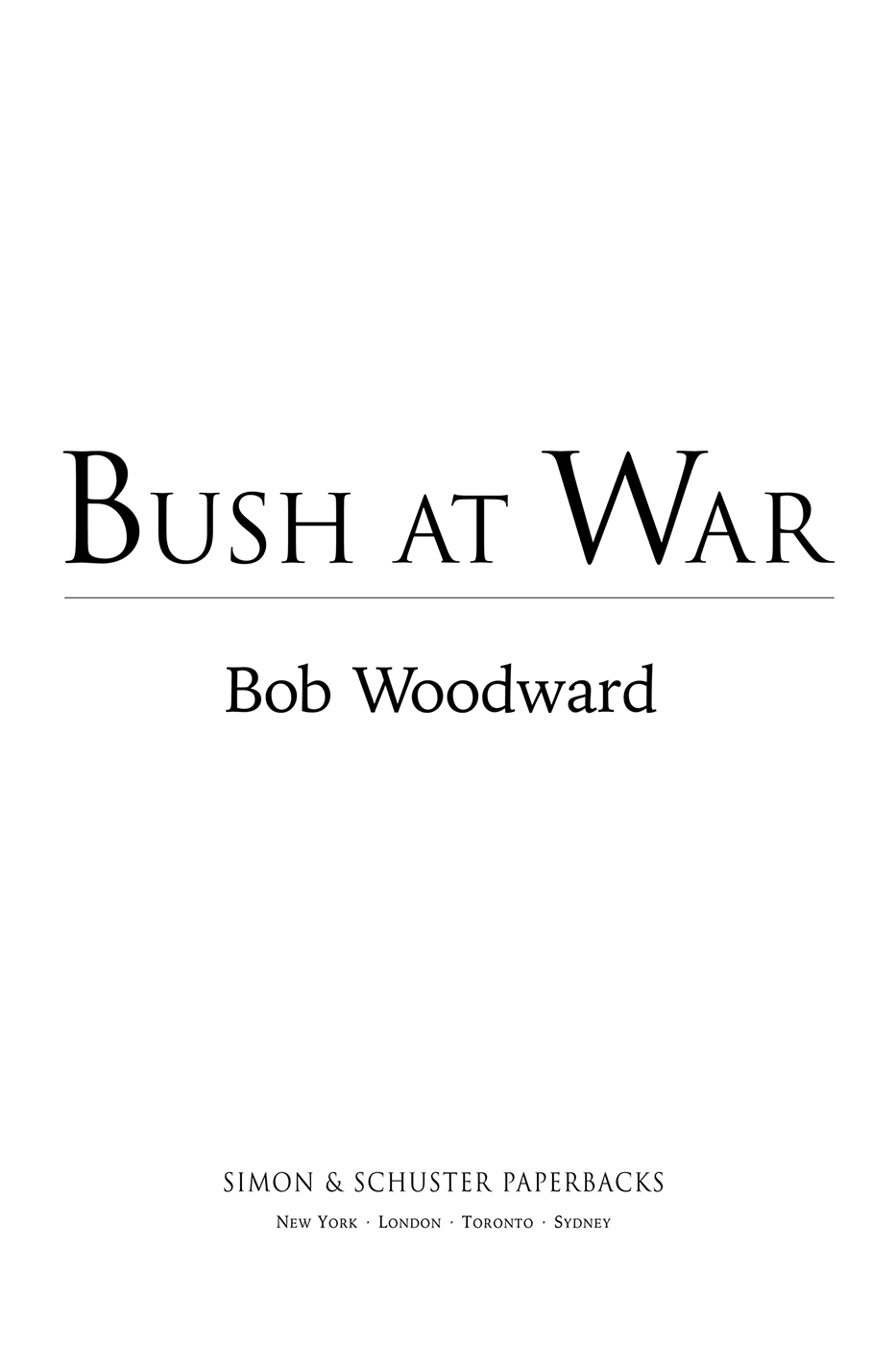
Contents
AUTHORS NOTE

Mark Malseed, a 1997 Phi Beta Kappa architecture graduate of Lehigh University, assisted me full-time in the reporting, writing, editing, researchand thinkingfor this book. He is one of the brightest, calmest, most remarkable young men I have ever encountered or worked with. He began as my assistant in May 2002, and in just six months mastered the subjects of Bush, his war cabinet, their debates and strategies. Well-read and meticulous, Mark always had superb ideas for improving the structure, substance and language of this story. He has a natural sense of order and was able to juggle a half-dozen tasks and persevere through 12-hour days with grace. He is tough-minded but scrupulously fair. I found I could trust him without question. Every day working with Mark was a joy, and I treasure our friendship. This book is a collaborationhis as much as mine.
To Donald E. Graham, who so brilliantly carries on the
legacy of his mother, Katharine Graham:
hands off, mind ona spirit of unfettered, independent
inquiry and a willingness to listen
A NOTE TO READERS

This is an account of President George W. Bush at war during the first 100 days after the September 11, 2001, terrorist attacks.
The information I obtained for this book includes contemporaneous notes taken during more than 50 National Security Council and other meetings where the most important decisions were discussed and made. Many direct quotations of the president and the war cabinet members come from these notes. Other personal notes, memos, calendars, written internal chronologies, transcripts and other documents also were the basis for direct quotations and other parts of this story.
In addition, I interviewed more than 100 people involved in the decision making and execution of the war, including President Bush, key war cabinet members, the White House staff, and officials currently serving at various levels of the Defense and State Departments and the CIA. Most sources were interviewed multiple times, several a half-dozen or more times. Most of the interviews were conducted on backgroundmeaning that I could use the information but the sources would not be identified by name in this book. Nearly all allowed me to tape-record our interviews, so the story could be told more fully and with the exact language they used.
I have attributed thoughts, conclusions and feelings to the participants. These come either from the person himself, a colleague with direct knowledge of them, or the written recordboth classified and unclassified.
President Bush was interviewed on the record twiceonce for 90 minutes by myself and Dan Balz, a colleague at The Washington Post, for a lengthy eight-part series, Ten Days in September, which was published in the Post in early 2002. I have drawn on that interview and the series for a portion of this book. I interviewed President Bush a second time on August 20, 2002, at his ranch in Crawford, Texas, for two hours and 25 minutes. The transcript shows that I asked questions or made short comments 300 times. The president gave specific answers, often very detailed, about his reactions and reasoning behind the main decisions and turning points in the war.
War planning and war making involve secret information. I have used a good deal of it, trying to provide new specific details without harming sensitive operations or relationships with foreign governments. This is not a sanitized version, and the censors, if we had them in the United Statesthank God we dontwould no doubt draw the line at a different, more restrictive place than I have.
This book contains a voluminous amount of new, documented information which I was able to obtain while memories were freshest and notes could be deciphered. It is an inside account, largely the story as the insiders saw it, heard it and lived it. Since it covers events and secret deliberations that began just over a year ago, it is an early version. But I was able to test the information I had for accuracy and context with trusted sources I have known for years and in some cases decades. Criticism, the judgments of history and other information may, over the coming months and years, alter the historical understanding of this era. This is my effort to get the best obtainable version of the truth.
In 1991, I published a book called The Commanders which was about the 1989 invasion of Panama and the lead-up to the Gulf War during the presidency of Bushs father, President George H.W. Bush. The decision to go to war is one that defines a nation, both to the world and, perhaps more importantly, to itself, I wrote at the beginning of that book. There is no more serious business for a national government, no more accurate measure of national leadership.
That is truer today than perhaps ever.
Bob Woodward
October 11, 2002
Washington, D.C.

CAST OF CHARACTERS

THE PRESIDENT OF THE UNITED STATES
George W. Bush
THE PRINCIPALS
Vice President of the United States Dick Cheney
Secretary of State
Colin L. Powell
Secretary of Defense
Donald H. Rumsfeld
Assistant to the President for National Security Affairs
Condoleezza Rice
Director of the Central Intelligence Agency
George J. Tenet
Chairman of the Joint Chiefs of Staff
General Richard B. Myers, United States Air Force
White House Chief of Staff
Andrew H. Card Jr.
THE DEPUTIES
Chief of Staff to the Vice President
I. Lewis Scooter Libby
Deputy Secretary of State
Richard L. Armitage
Deputy Secretary of Defense
Paul D. Wolfowitz
Deputy Assistant to the President for National Security Affairs
Stephen J. Hadley
Deputy Director of the Central Intelligence Agency
John E. McLaughlin
Vice Chairman of the Joint Chiefs of Staff
Next page
